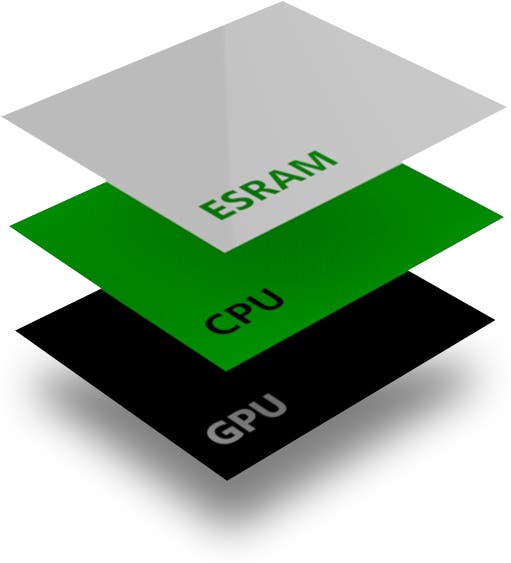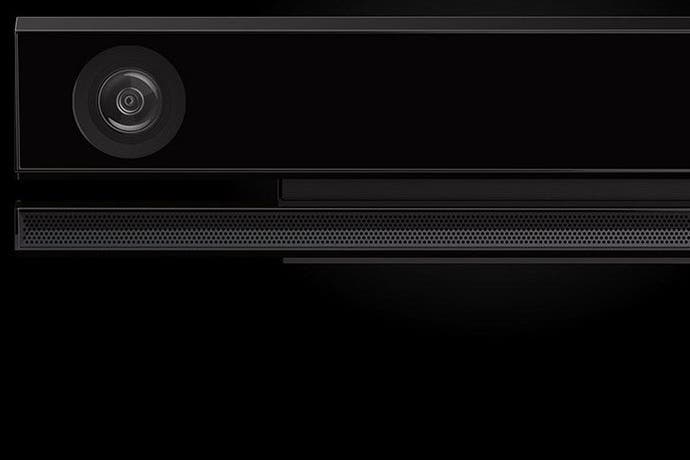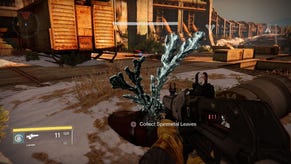How the Xbox One GPU Kinect reserve unlock works
Microsoft expects "tangible" benefit for games out this Christmas.
Microsoft has moved to clarify the impact of its decision to unlock the power of the Xbox One's graphics processing unit previously reserved for Kinect.
When Xbox One launched, 10 per cent of the console's GPU was reserved for use with the Kinect sensor. But this month Microsoft began selling the Xbox One without Kinect for a reduced price, and to coincide with that unlocked the 10 per cent reserve for developers to use as they see fit.
Some thought this meant that Kinect users would not be able to use some of its features, such as voice control and game capture, but Xbox executives Eurogamer spoke with at E3 last week denied this was the case.
"Lots of people ask, 'so, you're taking back the GPU reserve for Kinect. Well, does that mean I can't say, 'Xbox, record that?' No. You can always say that," Microsoft Studios creative director Ken Lobb told Eurogamer.
What Microsoft has done is create a flexible system where, according to Lobb, the Xbox One's GPU and RAM "can bounce".
"So if someone says, 'Xbox record that,' it will work on 100 per cent of the games, if you have a Kinect."
If you don't have a Kinect, "it's not like you have more RAM," Lobb clarified.
Microsoft has optimised the Xbox One's background operating system to support "flipping back and forth". It listens to the player sometimes, "and then pulling back if it's needed for a frame to go, he said, 'record that,' go record this thing.
"And you have to count for that whether you're using Kinect or not. But you get the full memory and the full bandwidth."
It's worth noting that if a developer creates a Kinect-free game, gesture controls and visual recognition features are suspended while the game is running. As soon as you minimise the game, however, all of the Kinect functionality returns.
How games use the extra horsepower will be up to developers, Lobb added. One, Bungie, has already been able to increase the resolution and frame-rate of its game, Destiny, on Xbox One, to hit 1080p30 - matching the PlayStation 4 version.
Other developers, however, might use it differently.

"You have more GPU, so go ahead and use it how you want," Lobb said. "It's more GPU plus more bandwidth to the GPU, so they both matter. So for some games it might be resolution, it might be frame-rate, or it might be, let's throw in more enemies."
The performance enhancements Microsoft has triggered in the Xbox One are all a part of "our platform improvement", Microsoft Studios Europe boss Phil Harrison told Eurogamer.
"The libraries developers get at the beginning of the life of a platform are radically different to the ones they will get five, eight and 10 years later," he said.
"Our job as a platform is to make sure we give fans the features that make their gaming experience better, and to give developers the tools to make the most of our chipset. We have to do both of those in balance."
This new set of libraries are available to developers right now, Harrison said. As mentioned, Destiny is already making use of it. But Harrison expects other games due out in time for Christmas will also benefit.
"Many developers will use that performance benefit to enhance and improve the graphical look or resolution or frame-rate of a game. We've already seen news that Bungie will increase the graphics performance of Destiny. And as other developers get their hands on the libraries in the next days and weeks, that will become tangible and impactful in games that ship this holiday."
Lobb added that he thought the decision to sell Xbox One without Kinect was "super smart", but he remains a big fan of the sensor.
"So, I love Kinect," he said. "To me, it's not the thousand things it does. I record s*** all the time and I say, 'Xbox, on.' So for me, those two things, the hundred bucks doesn't matter for me. For a lot of people it does. And so we've got to give you an option to pick. Do you want to say, 'Xbox, on?' Do you want to say, 'Xbox, record that?' Do you want to dance? No? Then you don't need the device. I think that's super smart."
Lobb pointed to the fact that Microsoft is making significant updates to the Xbox One on a monthly basis - a much faster rate than the company achieved with the console's predecessor, the Xbox 360.
"For me the best thing about what's happening with Xbox, which was in the original plan but we didn't talk about it much, was that we had a monolithic OS [on 360], and now we have an apps OS [on One].
"So what we had was, you updated once a year. We kind of do half updates every year, but we really had a big OS update once a year Now we have it every month. To me that's the best thing about Xbox One.
"Everything else is, that's awesome, I love the games. I just ran out of space, then, now I can plug in a three terabyte drive. Done. It's like, wow, I'm back to 10 per cent. Shopping! We're adding stuff that we haven't talked about. We know what July is. We know what August is. We know what September is. That's the thing I'm most excited about about Xbox, because it's not just the user-facing side of the OS. It's the developer-facing side."










